Ashura
India
Rite of Mourning
*Shocking photos are included.
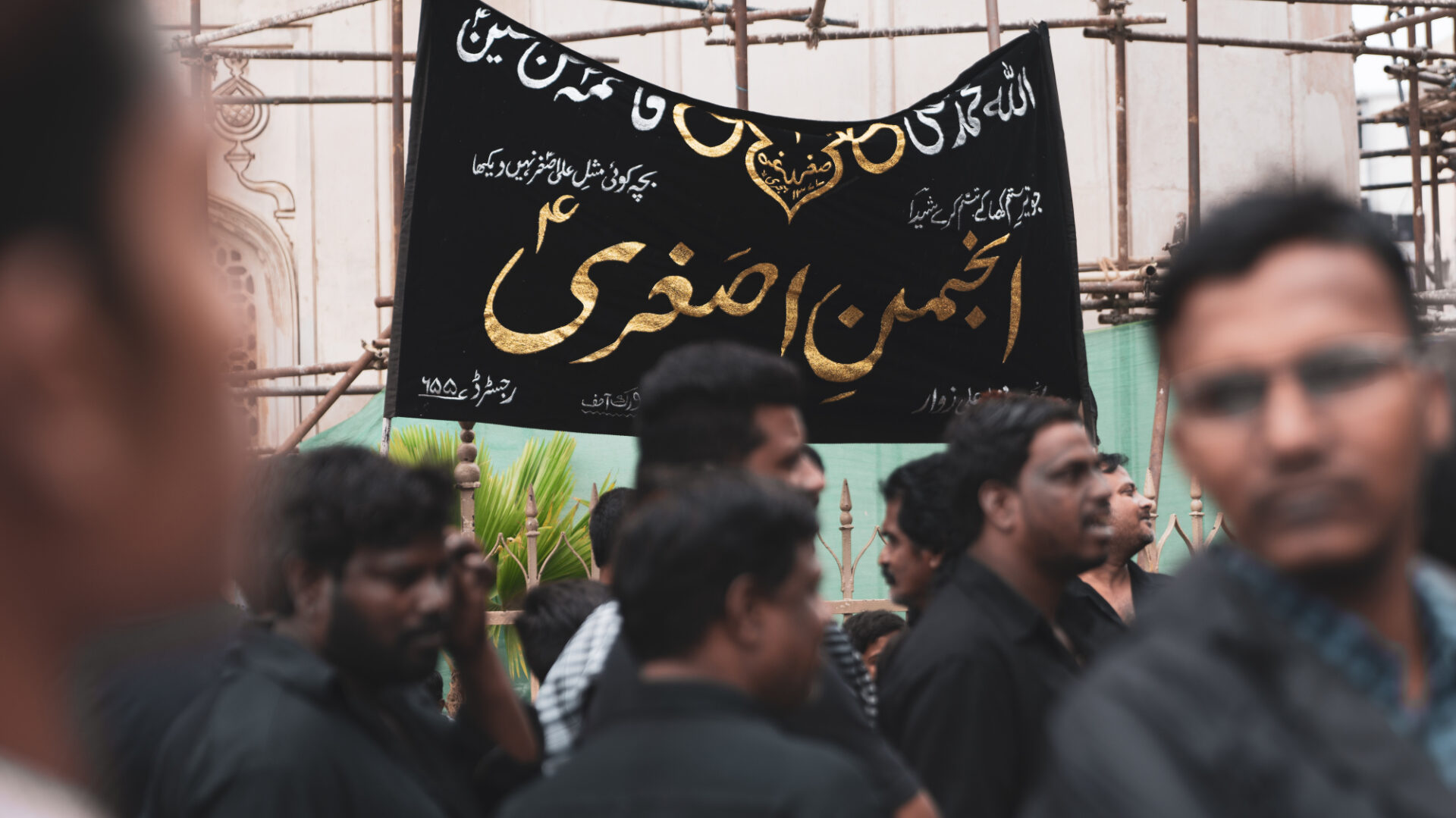
Ashura is an immensely important religious event for Shiite Muslims, observed annually on the 10th day of Muharram, the first month of the Islamic calendar. This day commemorates the martyrdom of Husayn ibn Ali, the third Imam of Shia Islam, along with his family and companions, during the Battle of Karbala in 680 CE. (Karbala is located in Iran and is now a holy place.)
Husayn is considered a symbol of justice and truth in the face of oppression, and his sacrifice is deeply embedded in the religious
The Significance of the Rituals
The rituals of Ashura are expressions of sorrow and remembrance, involving recitations of poetry, songs, processions, and sometimes acts of self-flagellation. These practices are meant to share in Husayn’s suffering and demonstrate loyalty and grief for him. Some devotees use whips or blades to inflict wounds on themselves, actions rooted in deep religious devotion. While these rituals may seem extreme to outsiders, for believers they are a profound embodiment of Husayn’s sacrifice and a declaration of their commitment to his teachings.
Respect for Faith
Some of the photographs in this exhibition capture moments of bloodshed during these rituals. These images are intended to help viewers appreciate the diversity of human faith and the profound spiritual meaning behind these acts. Rather than focusing on the apparent intensity of the rituals, we hope visitors recognize that these practices represent a deep faith passed down through generations. They are important religious ceremonies for the participants, offering them both a sacred tradition and emotional support.
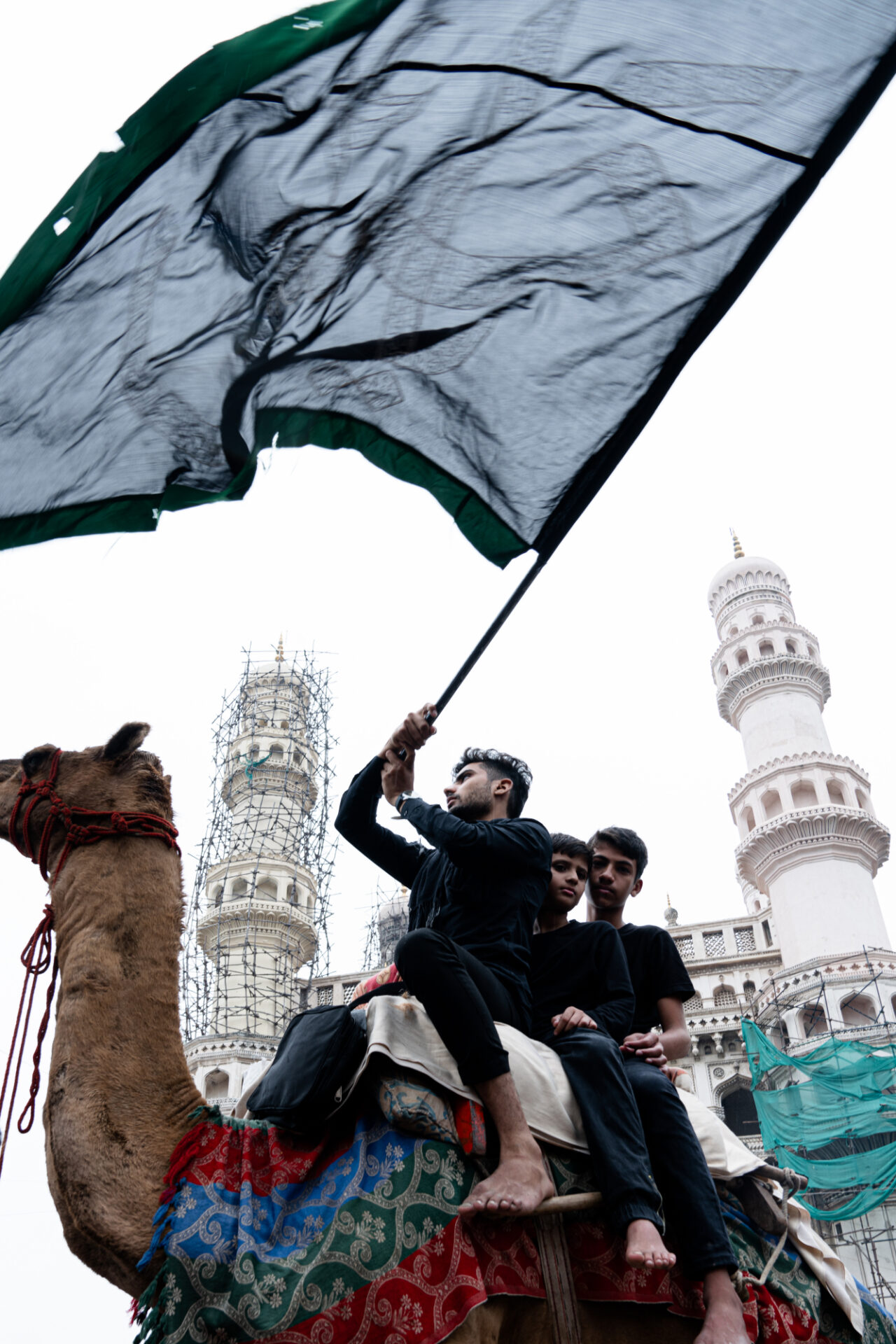
Riding camels on the day of Ashura is a symbolic act that reenacts Imam Husayn’s journey to the land of Karbala.
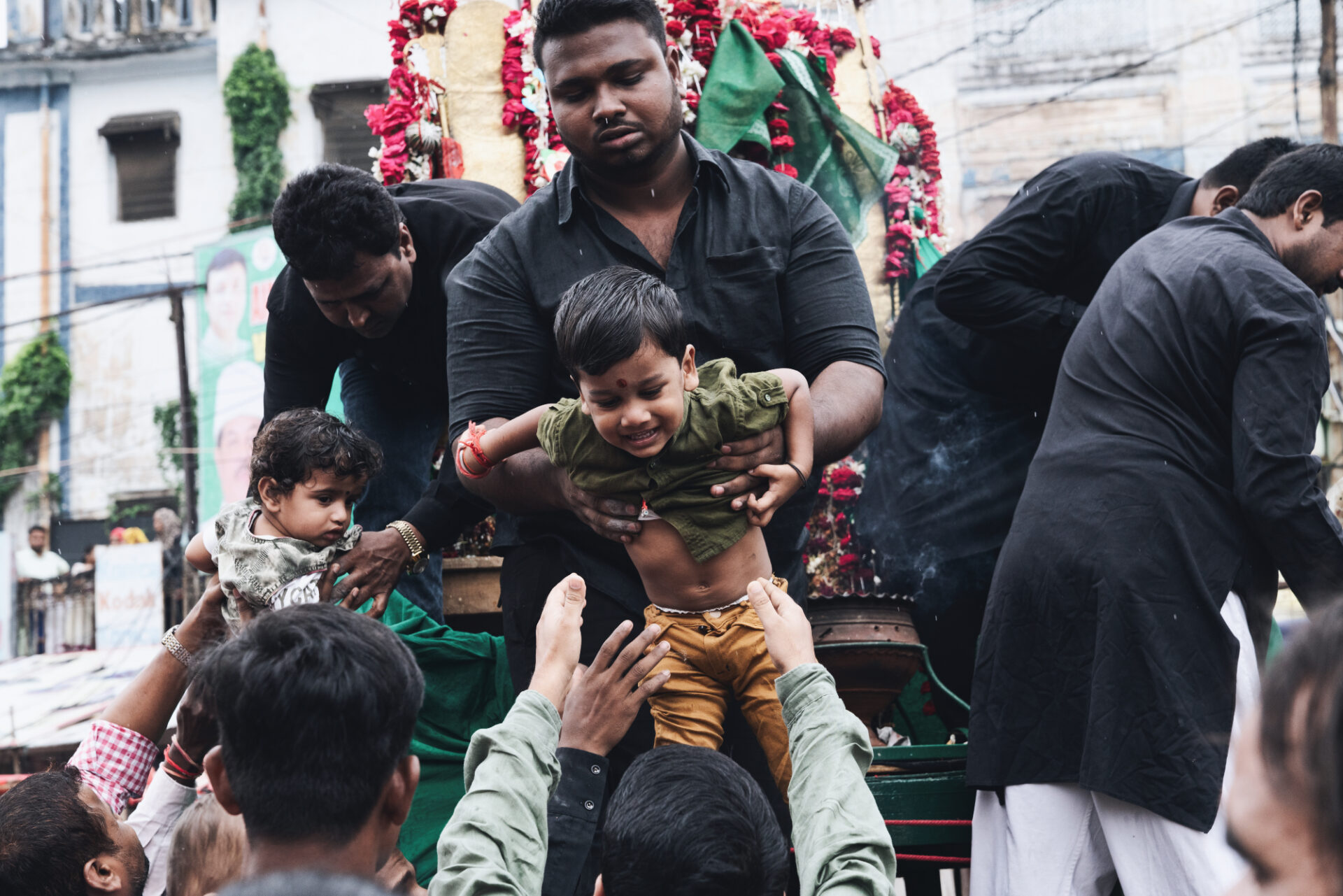
Incense smoke is sprinkled over the children. The smoke is believed to have the power to dispel evil spirits and protect the children from negative influences. I have not seen this practice outside of Hyderabad. Since Islam has diverse sects and customs vary by region, this could be a tradition unique to this area.
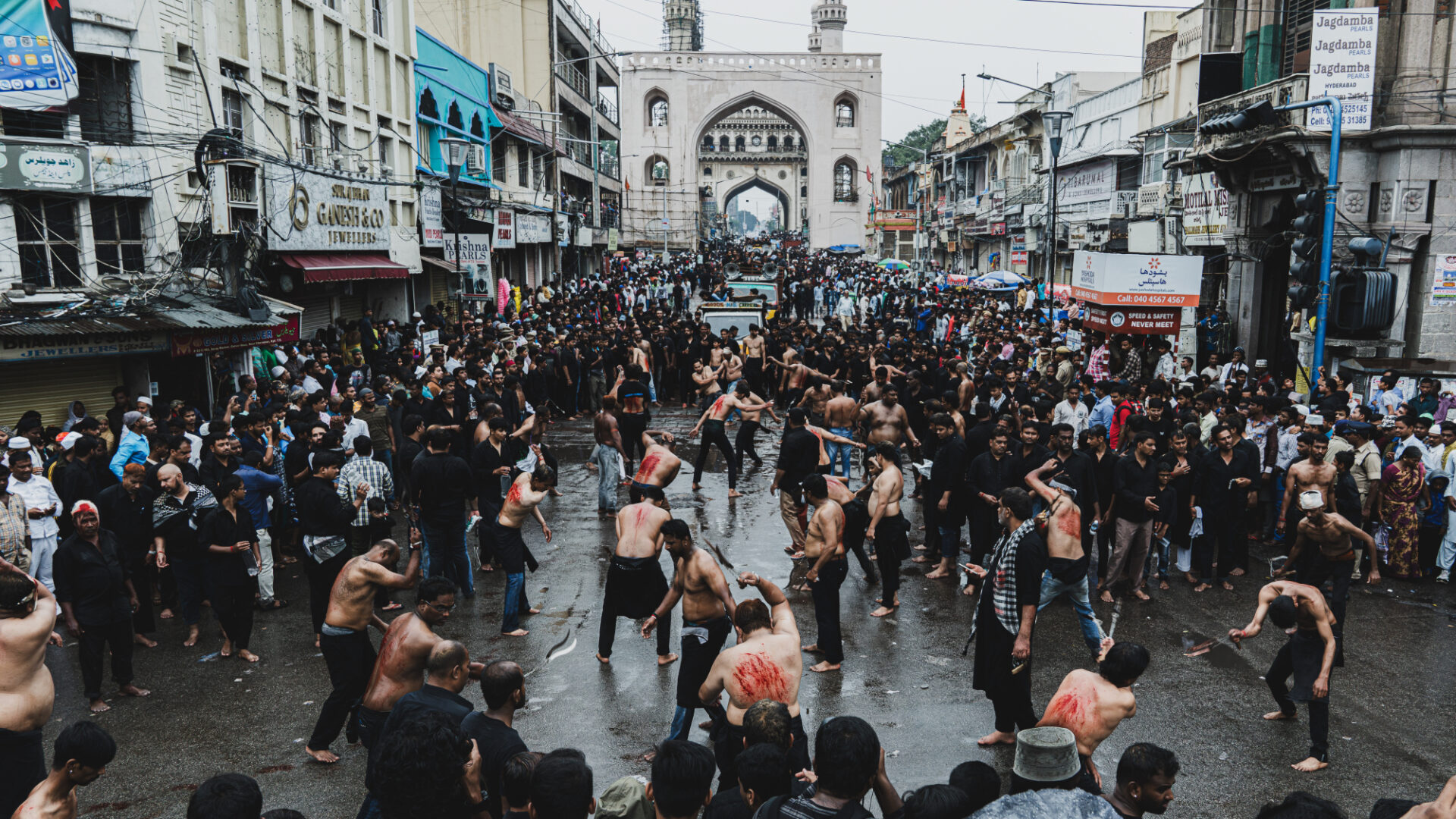
Charminar is a famous landmark in Hyderabad.
During the Qutb Shahi dynasty, Twelver Shia Islam was the state religion.
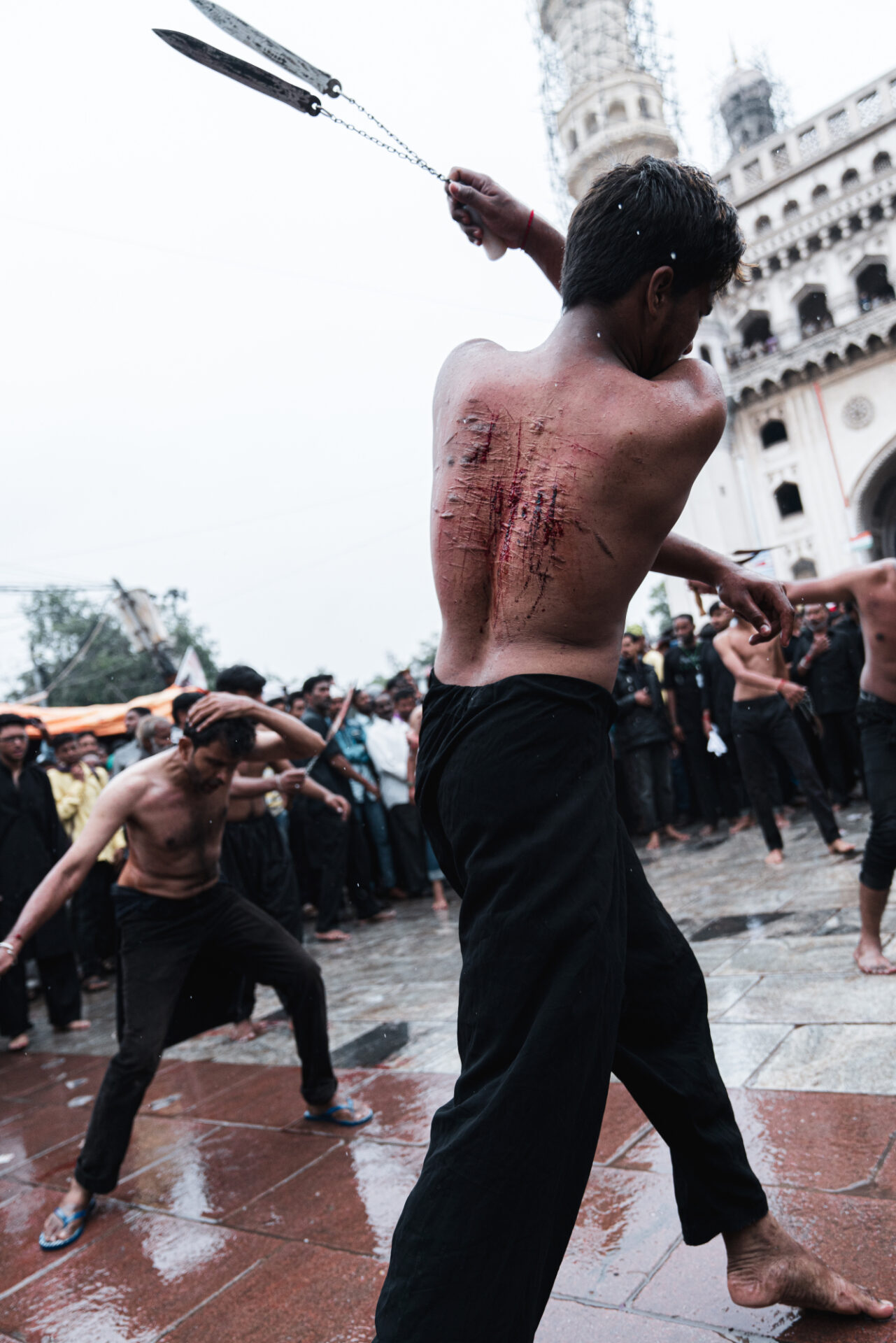
Just as Imam Husayn stood for justice, this also conveys a message of societal transformation towards building a better society.
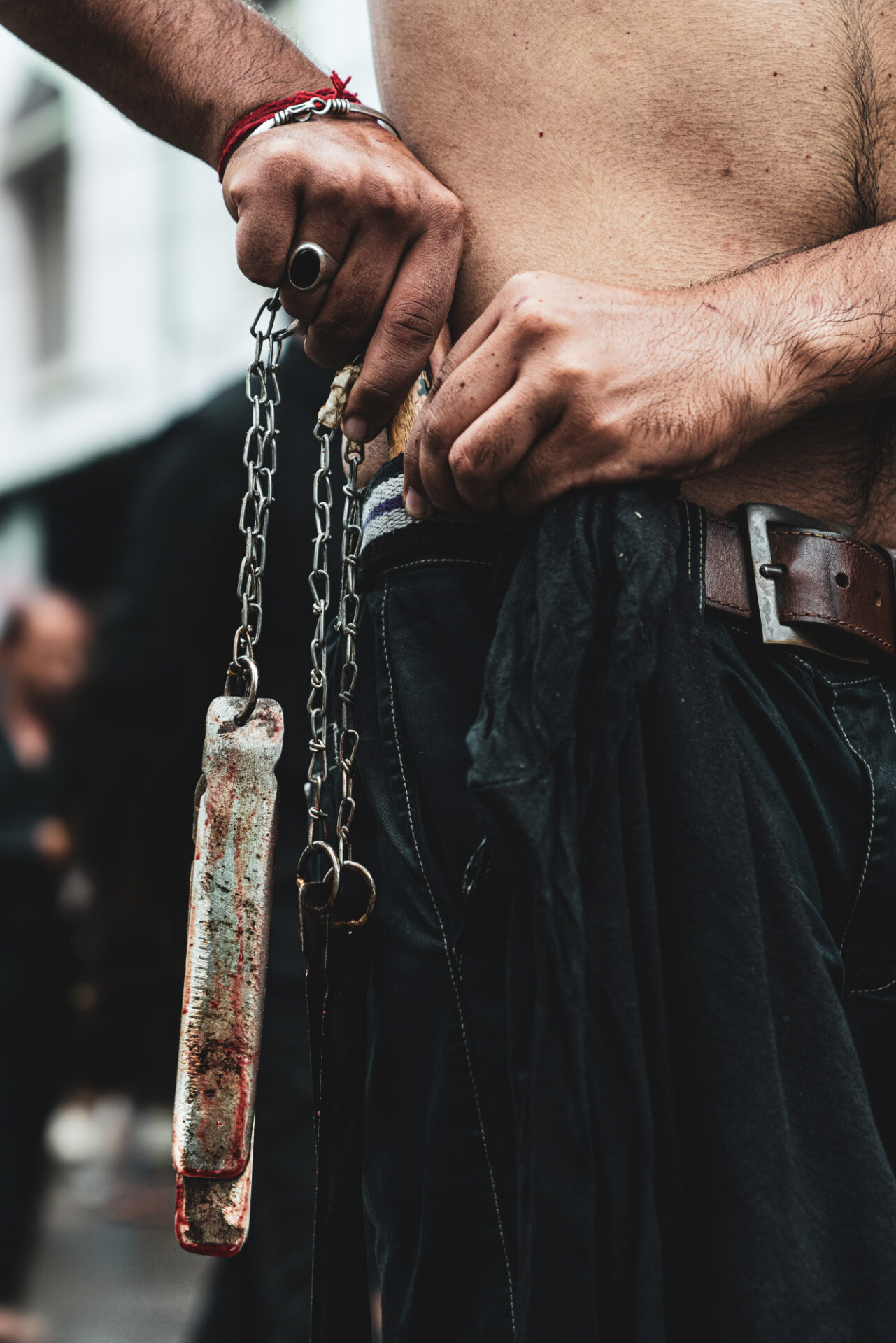
Zanjeer is a tool used for self-flagellation, varying in form depending on the region.
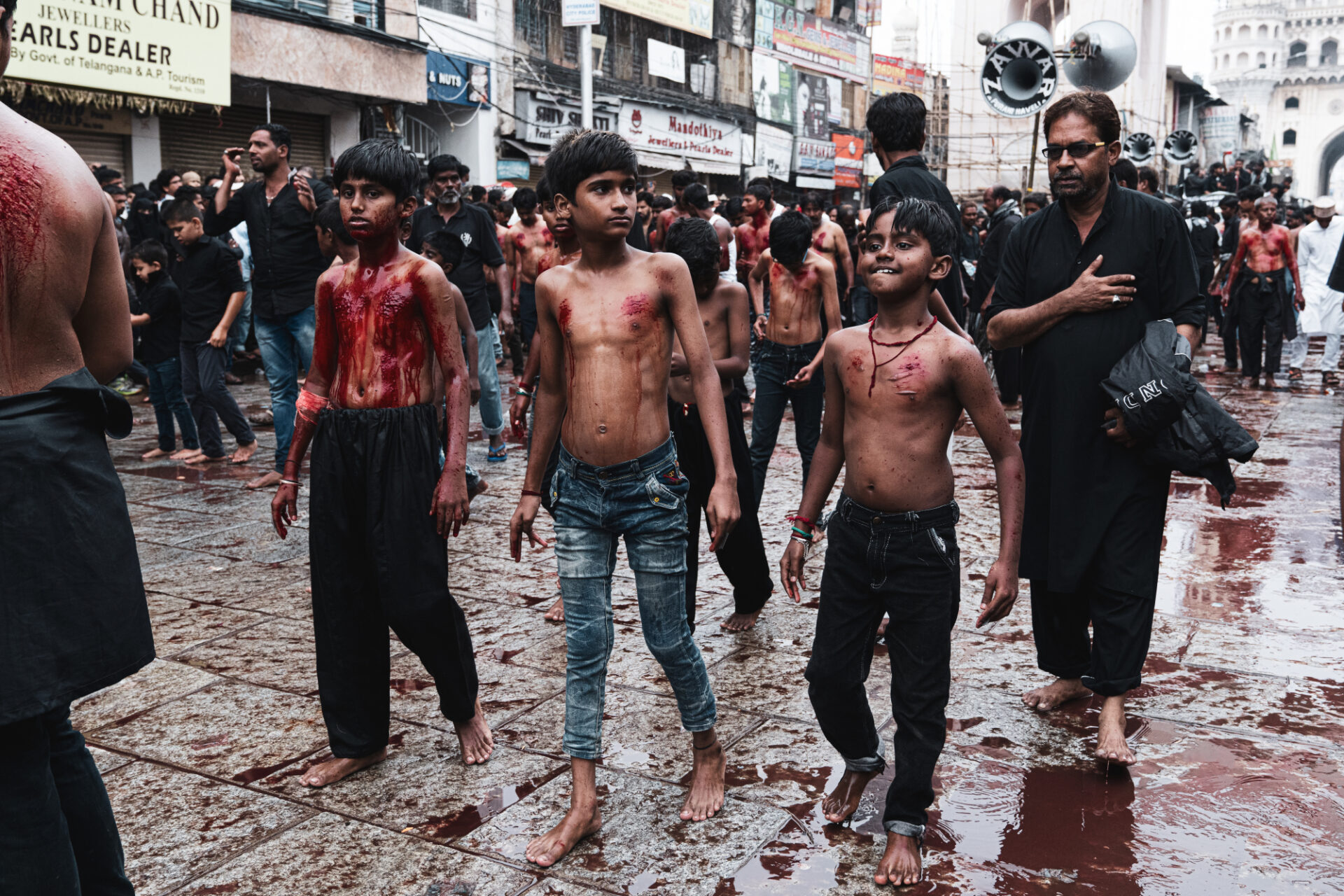
The proud expressions on the children’s faces reflect the dignity and composure of adults.
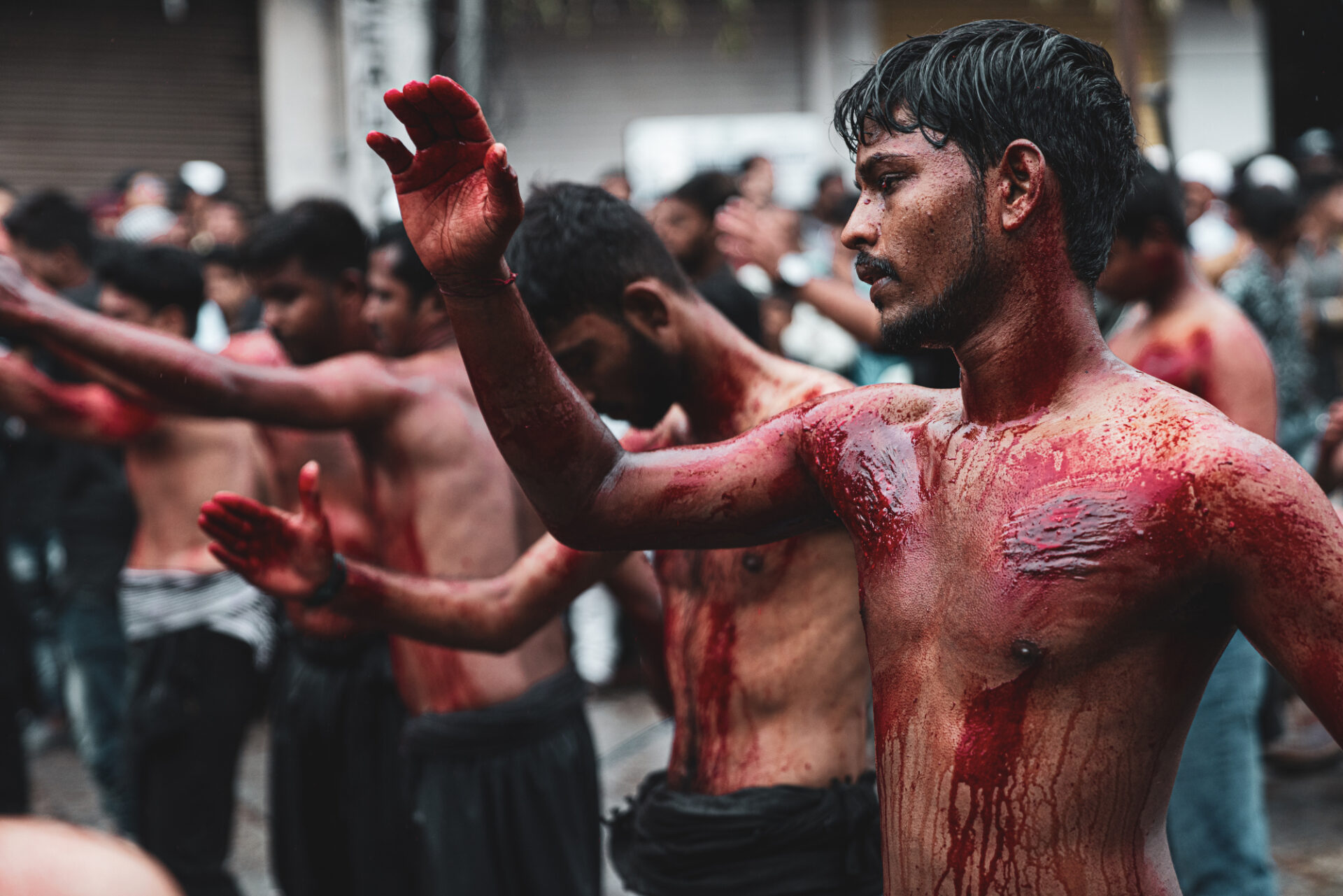
The act of chest-beating is called Matam or Latmiyya. This ritual is performed by Shia Muslims as part of their mourning for Imam Husayn's martyrdom and to express their empathy with his suffering.
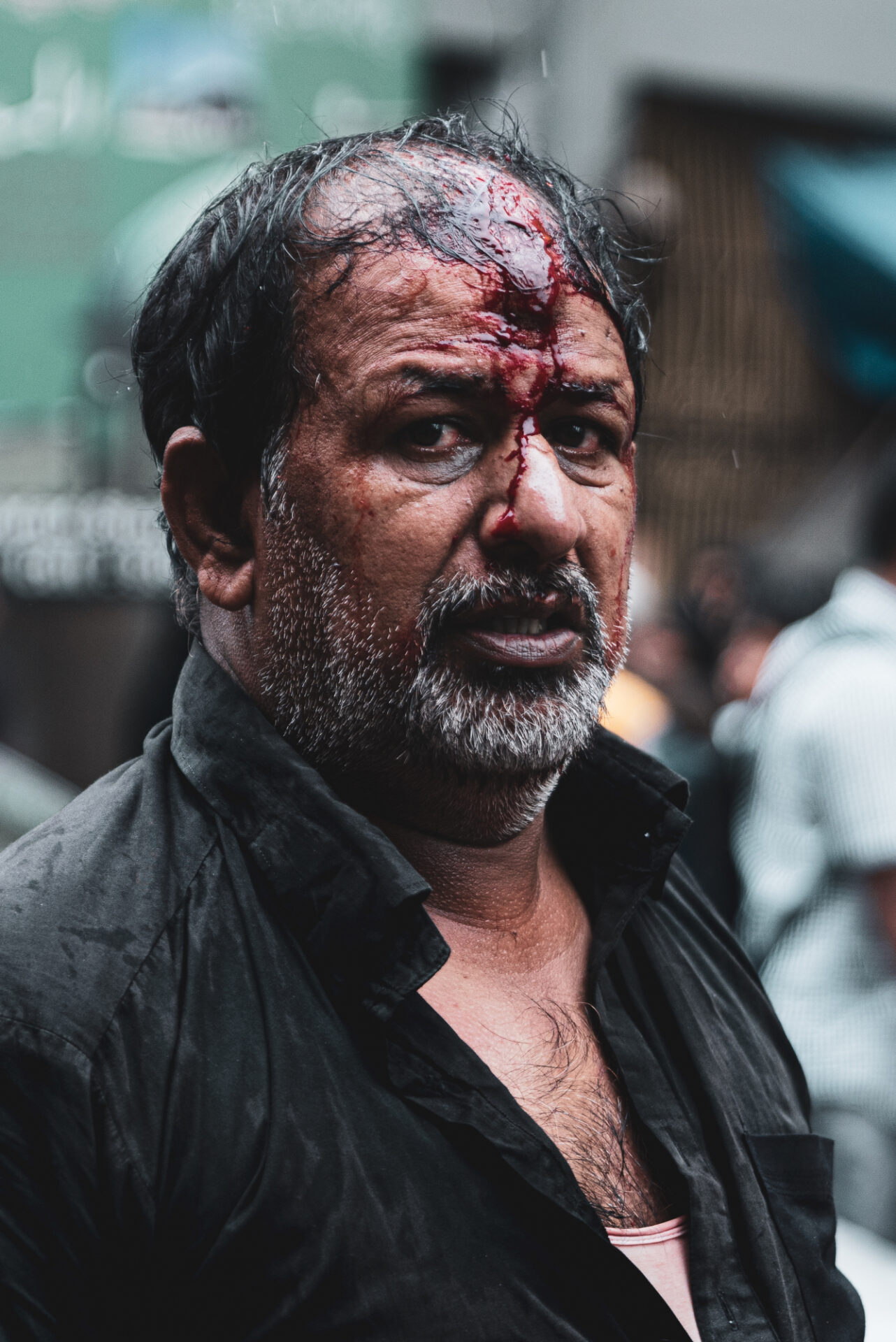
The reason Shia Muslims wave black flags is that they symbolize mourning and commemorate the martyrs.
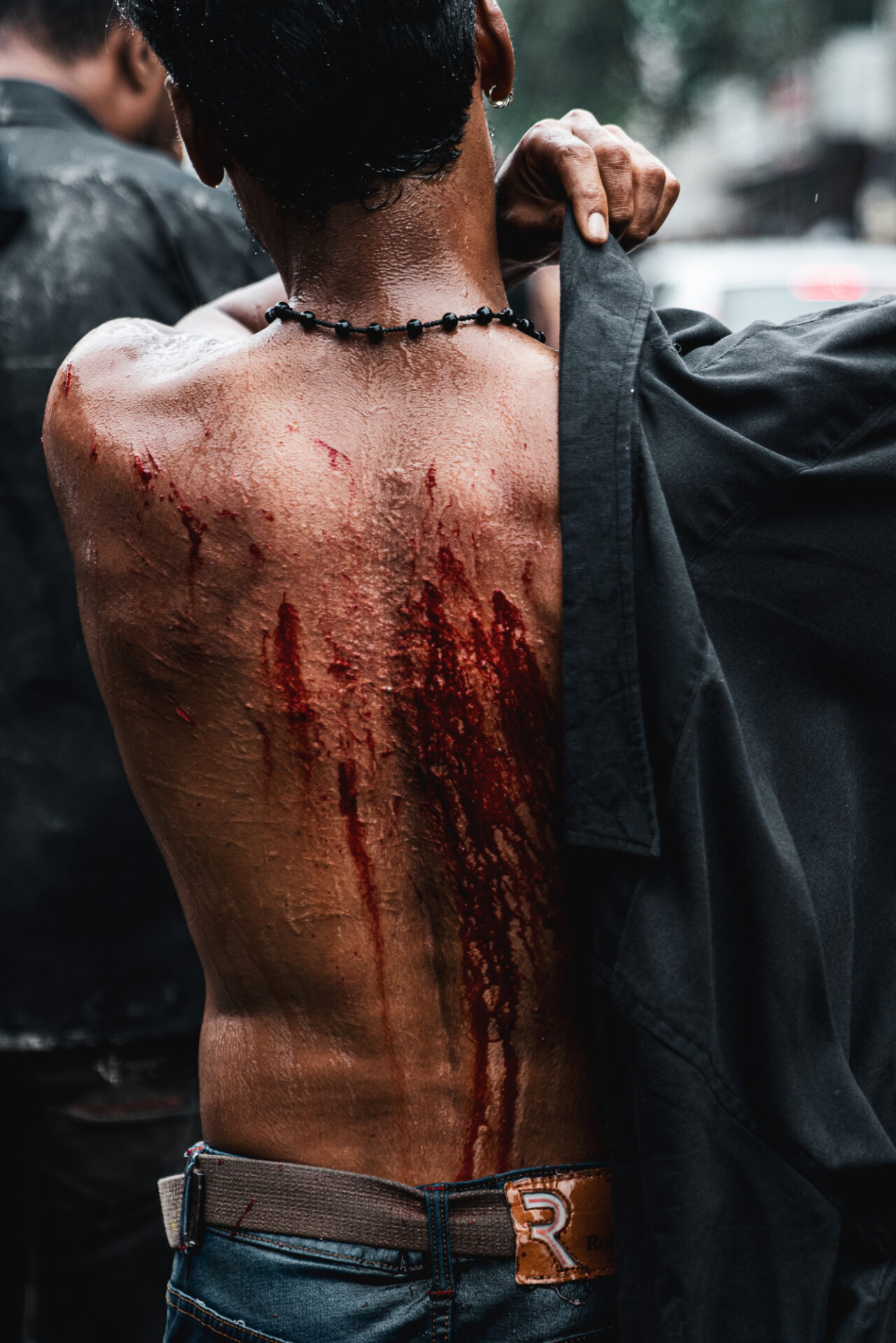
The scars remain like badges of honor, and every time they see them, they are reminded of Husayn and God's mercy.
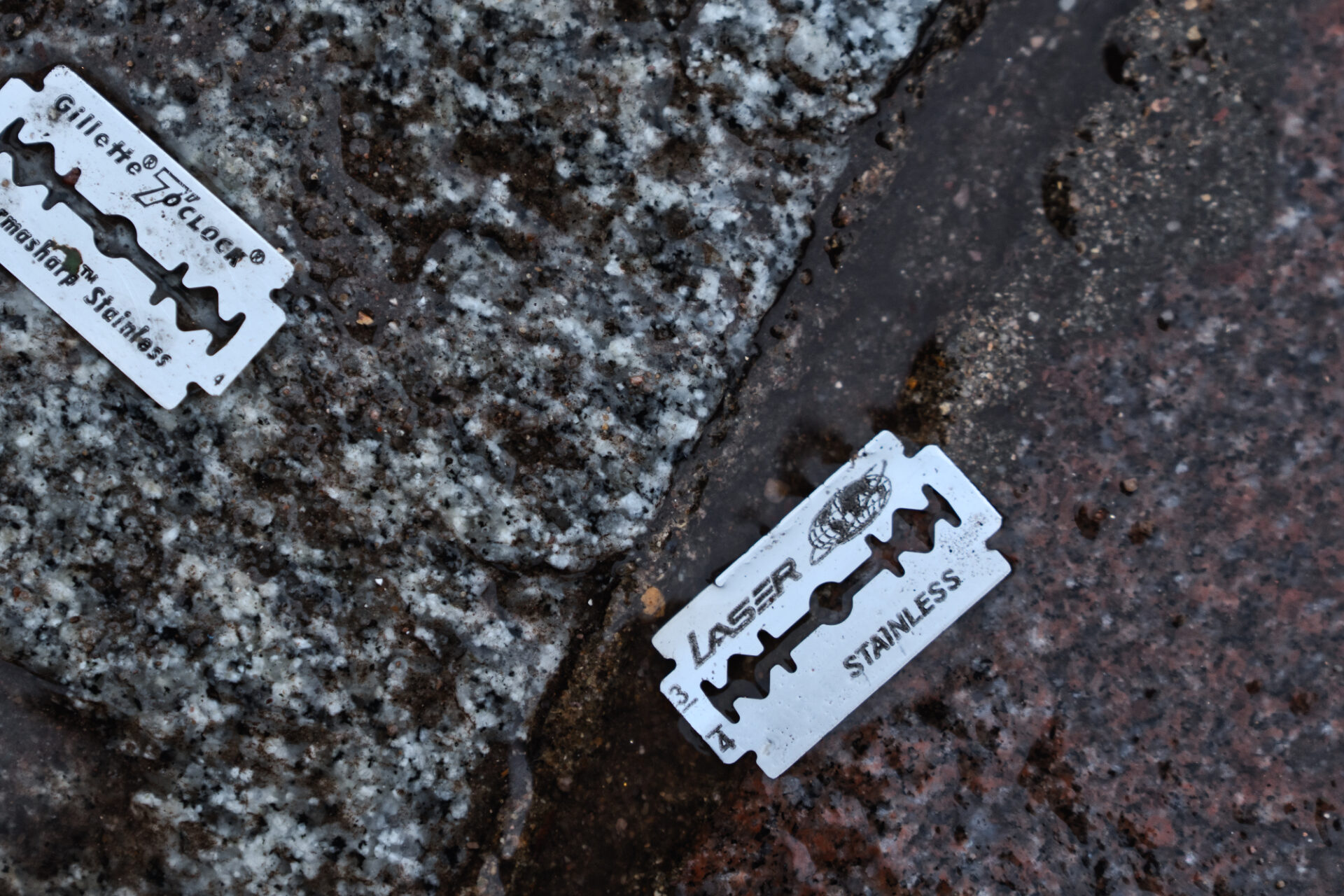
The sorrow of the heart surpasses the pain of the body.
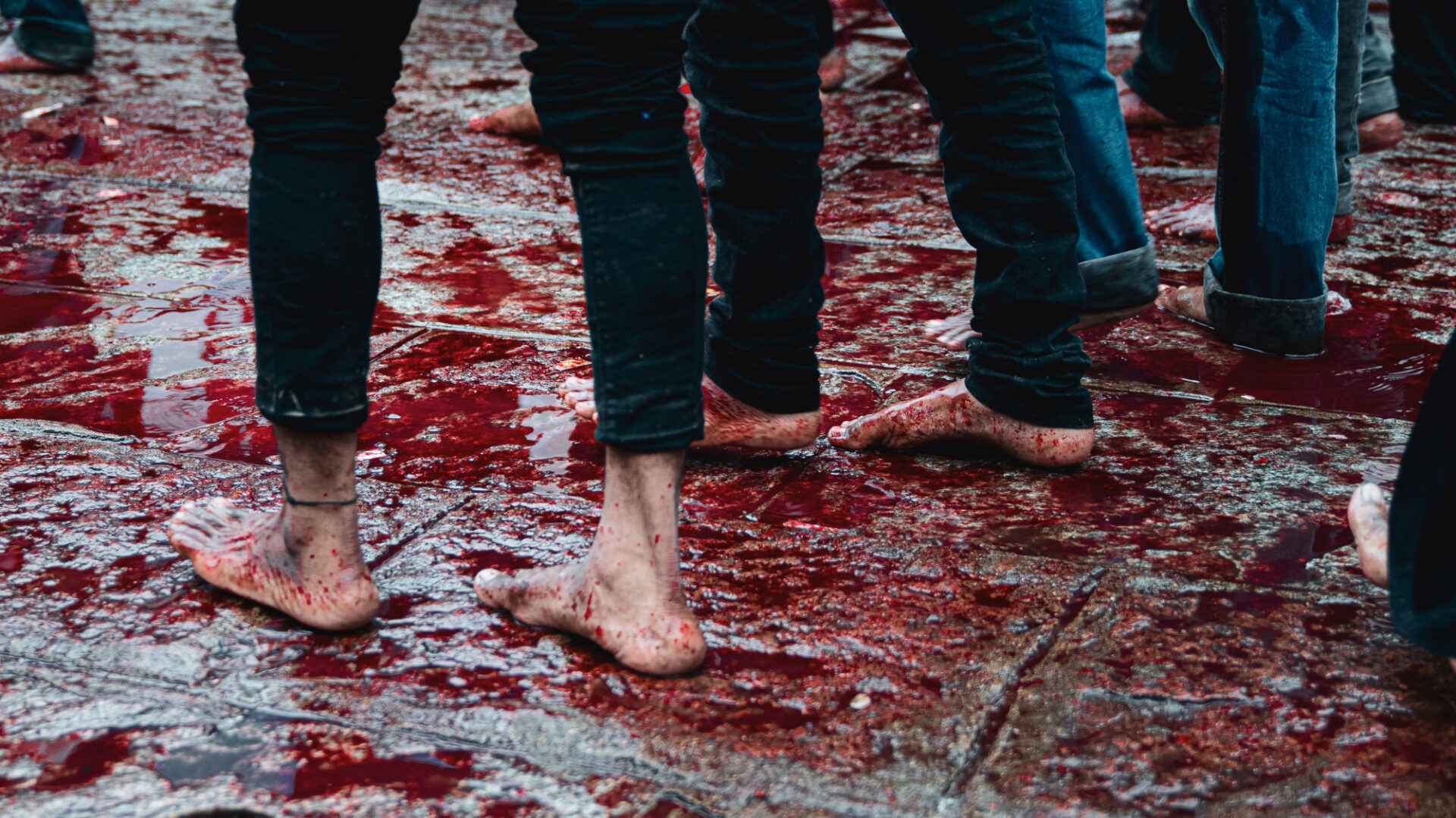
The tradition of unity and strong bonds that has been preserved will continue in the future.
On the morning of the event, I arrived at Char Minar Square, the main venue, but the area was quiet. Light rain, which had been falling since the previous day, continued, so I brought only one camera to keep it dry and stay agile. As time passed, police vehicles began arriving, and access to the area became restricted, creating a tense atmosphere. Soon after, journalists, photographers, and amateur photographers started to gather, and their presence gave me a sense of relief. I thought that with so many others documenting the event, the sheer number of people would reduce the likelihood of personal harm in case things turned dangerous.
When the Shia participants riding camels entered Char Minar Square, the crowd, including police, worshippers, and spectators, surged, making it difficult to take photographs. At one point, I saw a man get shoved and yelled at, seemingly for obstructing the procession. Another photographer, attempting to shoot despite restrictions, was dragged away by the police. I was stuck in a poor spot for taking photos and couldn’t get close to the procession. I did spot an excellent vantage point, but it was already filled with TV crews and professional photographers.
As I continued to shoot through the gaps in the crowd, a large Shia man, part of the procession, suddenly grabbed my arm and started yelling at me. I had no idea what he was saying. He appeared to be someone in charge of the group’s progress. As he pulled me forward, I briefly considered running away, but sensing that he wanted to communicate something, I decided to follow. To my surprise, he led me to the prime spot I had been eyeing, where professional photographers were gathered. He then ordered them to make room for me. Although they protested that there was no space for more photographers, the man shouted them down and insisted on making a place for me. Before leaving, he gently spoke to me. While I didn’t understand his words, I imagine he said something like, “Here’s a good spot for your photos. Don’t worry, take your shots.” His kindness in looking out for someone like me, a stranger in this environment, was deeply moving.
Looking around more carefully, I noticed that the Shia participants being photographed weren’t angry at all. Instead, many of them appeared sorrowful, with some even shedding tears in mourning. I felt ashamed for holding any bias against them, and I realized that many people in this town likely misunderstood this minority as well.
Throughout history, humans have always feared the unknown—whether it’s lightning, disease, or mythical creatures lurking in the forest. But once we understand these phenomena, we realize they aren’t as terrifying as we once believed. Perhaps even death, that great unknown, isn’t something to be feared once we experience or comprehend it. Many religions practice rituals based on faith, such as prayer, pilgrimages to holy sites, or fasting, which are central to the lives of believers. The scenes I witnessed at Ashura brought to mind other acts of self-sacrifice carried out in the name of faith, making me realize that such practices are not confined to this place alone. Throughout the world, there are countless acts of asceticism and sacrifice, and people have been offering their lives for their beliefs for centuries.
The image of Thich Quang Duc, the monk who set himself on fire, remains etched in my mind. Just as there are those in Christianity who faced persecution or in Buddhism who became Sokushinbutsu (self-mummified monks), there are people even now who give their lives for faith in various forms. In places like China, among Uyghurs and Tibetans, similar things are happening, as is well known. I also once read an article that explained how suicide bombings in jihad are not seen as suicide but as martyrdom.
Whether or not these acts involve God's will or intervention, I cannot say for certain.
"Although I was unable to photograph inside the mosque in Hyderabad, prior to the ritual, the cleric delivers a sermon on the actions of Husayn ibn Ali and the mercy granted by God.
The men listen quietly, filled with gratitude, and some even shed tears. As these moments are not captured in the photos here, I am concerned that the mourning ceremony might be misunderstood as solely an extreme display."
